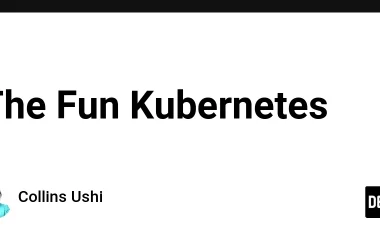In finance, confirming identities is a vital defense against fraud. Traditionally, this process involved lots of paperwork, lengthy procedures, and often, visiting banks or financial institutions in person.
However, technology has brought about a revolution in this area, with video Know Your Customer (KYC) becoming a significant development.
In this article, we’ll learn every single aspect of video KYC, including its effects on finance, regulatory challenges, and future trends.
Evolution of Identity Verification
The journey of person verification has transformed over time, adapting to technological changes, rules, and societal needs. Let’s break it down.
Back in the day, people used seals, signatures, and written documents to prove who they were. However, these methods were not always reliable, as they could be forged or faked.
Then came official documents like passports and driver’s licenses, which made it easier to prove one’s identity. These documents became the standard for checking people, especially across different official places and organizations.
As the internet became widespread, society approached the need for new ways to check individuals. This led to usernames and passwords, as well as extra security steps like security questions or codes sent to phones.
Recently, we’ve seen the rise of biometric technology, which uses unique physical features like fingerprints or facial features to confirm who you are.
What Is Video KYC?
Video KYC represents a prominent change in checking people, combining tech with human contact. It includes live video calls between customers and agents who confirm identity through facial recognition, document checks, and live chat.
Online client onboarding has made checking customers faster and safer for everyone involved. Put simply, people don’t have to go to a bank in person to prove who they are; still, the process involves talking to a real person, which minimizes the risk of fraud.
Advantages and Challenges of Video KYC
Online KYC, like any invention, comes with its share of pros and cons. Let’s explore them in detail.
First of all, video screenings ensure that the person on the other end is who they claim to be, which helps prevent identity theft and makes transactions safer.
Second, with remote KYC, clients can complete the ID process from the comfort of their homes. And if they have any questions or concerns, someone is always there to help them right away.
Third, online customer authentication speeds up the process of opening accounts or accessing banking services. This means customers can get things done more quickly compared to traditional methods.
Nonetheless, to make video KYC work at its maximum, clients must have a stable internet connection and compatible devices. If their internet is slow or their devices are inappropriate, completing the authentication process can be challenging.
Some people also worry that their personal information will be shared during the tet-a-tet call. To overcome this issue, banks must ensure that they properly protect sensitive data.
Another point is that setting up and running video screening can be costly for financial institutions, which might result in higher fees or charges for customers in the long run.
For some individuals, talking to a screen instead of a person can feel less friendly or personal. Video KYC may lack the human touch that comes with face-to-face interactions.
Finally, banks must adhere to strict regulations when verifying their clients. This includes compliance with anti-money laundering (AML) and other regulations, which may vary by jurisdiction.
Real-world Examples of Using Video KYC
Now, let’s look at some real-life examples of using remote identity validation. These show how financial institutions globally use it to improve customer sign-ups, make processes smoother, and meet regulations.
- DBS Bank: Based in Singapore, DBS Bank is known for its digital changes. It uses video calls in its online sign-up process, letting customers open accounts remotely through safe virtual calls. This move has greatly cut down on time and resources needed for getting new customers while sticking to rules.
- Paytm: India’s top digital payment platform, Paytm, uses remote checks to quickly bring users onto its platform. Through the app, users can start a video session to verify who they are and get access to a range of financial services like payments, banking, and investments.
- Monzo: Monzo, a UK-based digital bank, uses digital meeting checks to optimize the sign-up process for new customers. They can do their check over video calls, skipping the need to go to a branch in person. Overall, this approach allows Monzo to give users a simple and quick banking experience while still following all corresponding regulations.
- Standard Chartered Bank: Standard Chartered, a prominent banking and financial services company, uses online customer screening to make it easier to sign up customers in different places. By using video, the bank reaches more clients and serves them equally well across the world.
- N26: N26, a digital bank based in Berlin, Germany, offers video know your customer as part of its mobile banking. Customers can prove who they are over remote calls, making it fast to open an account and get banking services.
Future Trends
Looking forward, the future of video KYC looks promising. Progress in developing AI and machine learning algorithms should make it even more accurate and efficient.
Also, using blockchain could change how banks and fintechs manage identities, giving top-notch security and clarity. Plus, if video validation keeps getting used widely, more people who don’t have much access to banking might get included.
Conclusion
Video KYC represents a significant change in the customer authentication process, providing a handy, safe, and quick solution for both banks and customers.
Though there are still some obstacles to work through, the good stuff is much more than the bad, making finance more open and clear.
As tech keeps getting better, video KYC is set to be a crucial part of how financial establishments check identities in 2024 and beyond.
Contact SCAND now to upgrade your identity verification process with our best financial service software, including video KYC.
The post Financial Revolution: Video KYC’s Impact on Identity Verification in 2024 appeared first on SCAND.








